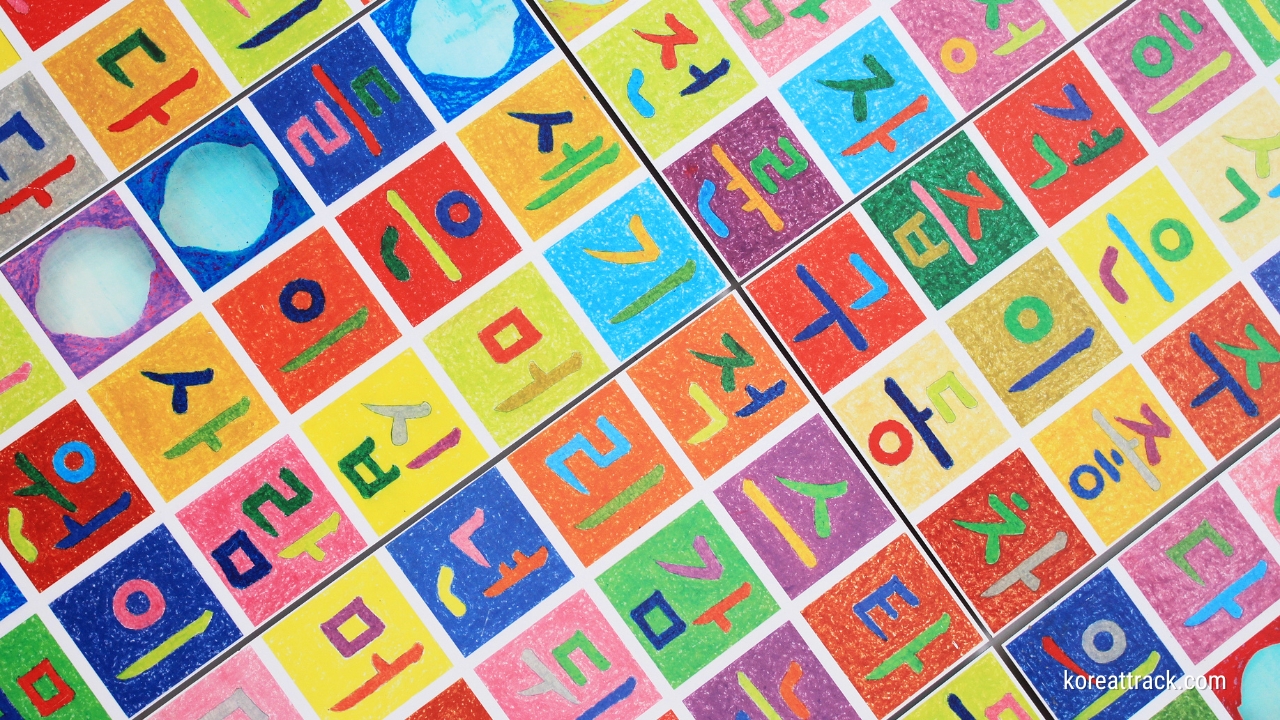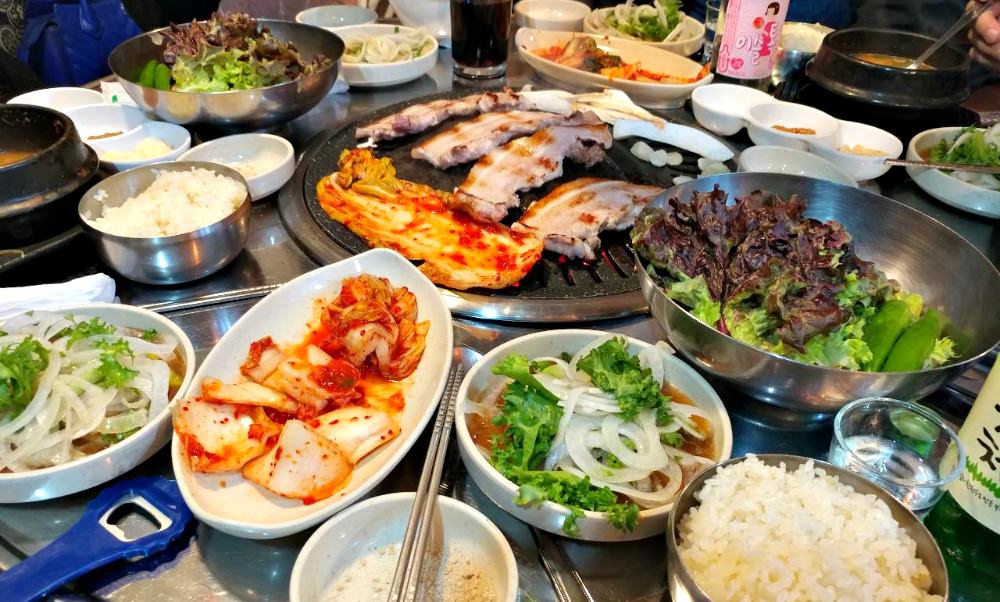Mastering Hangeul:
The Korean Alphabet
 Mastering Hangeul: The Korean Alphabet
Mastering Hangeul: The Korean AlphabetMastering Hangeul: The Korean Alphabet
Learning a new language can be both challenging and rewarding. It requires persistence, effort, and a willingness to step out of your comfort zone.
I have been dedicated to mastering the Korean language for over a decade. The journey has been full of ups and downs, but my progress has been gratifying.
Reflecting on my experience, I realized that one of the most fundamental steps in learning Korean is mastering Hangeul (한글), the Korean alphabet.
In this article, I will share my knowledge of Hangeul and its importance in the Korean language. We will delve into the fascinating history and structure of the alphabet.
By the end of this article, you will have a solid understanding of the basic principles of Hangeul.
So, whether you are a beginner Korean learner, let's explore the world of Hangeul together and see how it can help you master the Korean language.
Origins & History
 King Sejong the Great
King Sejong the GreatHangeul was developed during the 15th century under the reign of King Sejong the Great (세종대왕) of the Joseon Dynasty.
Prior to Hangeul, Koreans used Chinese characters (Hanja) for writing, which posed challenges due to their complexity and need for alignment with Korean sounds.
King Sejong aimed to create a new writing system that adequately represented the Korean language and improved literacy rates.
The creation of Hangeul was a remarkable achievement, as it allowed even ordinary people to learn it quickly.
As the saying goes, "A wise man can acquaint himself with them before the morning is over; even a stupid man can learn them in ten days. "
How Hangeul Works
Hangeul consists of individual letters (characters) that represent specific sounds. Hangeul letters can combine to form syllables, unlike Chinese characters, which are immutable blocks.
Each Hangeul letter represents a consonant or vowel sound. For example:
- ㅏ (a) represents the "ahhh" sound.
- ㄱ (g) represents the "g" sound.
- ㅇ (ng) is a placeholder for no sound at the beginning of a syllable.
Hangeul is phonetic, meaning that its letters directly correspond to spoken sounds.The system is highly intuitive, making it accessible to learners once they grasp its basic principles.
Writing & Pronunciation
Hangeul letters are combined into syllables, each representing a complete sound unit. Syllables are formed by arranging consonants and vowels in specific patterns.
The pronunciation of Hangeul letters is straightforward, as they closely mirror spoken sounds.
Romanization (writing Korean using the Latin alphabet) is often used for beginners, but it's essential to transition to reading Hangeul directly to access more advanced content.
Usage & Present Status
Hangeul is the official writing system of both South Korea and North Korea.
It is used for various purposes, including literature, education, official documents, and everyday communication.
Hangeul has endured and remains a symbol of Korean identity and cultural resilience despite historical challenges.
Learning Hangeul is crucial for accessing authentic Korean content, as most resources beyond beginner levels need to provide Romanization.
Learning Syllables
Since you have already learned the basic information about the Korean language, Hangeul, it is time to form words and syllables.
- 가 (ga):Represents the sound "ga."Composed of the consonant ㄱ (g) and the vowel ㅏ (a).
- 사과 (sagwa):It means "apple."Composed of syllables: ㅅ (s) + ㅏ (a) + ㄱ (g) + ㅘ (wa).
- 물 (mul):It means "water."Composed of the consonant ㅁ (m) and the vowel ㅜ (u) with no final consonant.
- 한글 (Hangeul):Refers to the Korean alphabet.Composed of syllables: ㅎ (h) + ㅏ (a) + ㄴ (n) + ㄱ (g) + ㅡ (eu) + ㄹ (l).
Remember that Hangeul syllables follow consistent patterns, making them easy to learn and use!
Practicing writing Hangeul (the Korean alphabet) is essential for mastering it. Here are some helpful resources and tips to improve your Hangeul handwriting.
Free Korean Alphabet Worksheets:
You can find a collection of free Korean alphabet worksheets for beginners. These worksheets include basic consonants, vowels, combined vowels, and double consonants. They are available in printable PDF format, making it easy to practice your handwriting.
Here's what you'll find:
- Worksheet 1—Basic Consonants: This worksheet includes the 14 basic consonants. Each letter is accompanied by its sound, romanized letters, and plenty of space to practice writing.
- Worksheet 2 – Basic Vowels: Practice writing the basic Korean vowels. Pronunciations are provided next to each letter.
- Worksheet 3—Combined Vowels: This worksheet is for practicing combined vowels (made from two simple vowels but producing a single vowel sound).
- Worksheet 4 – Double Consonants: Practice Korean double consonants (pronounced the same as single consonants but 'tensed').
(You can download these worksheets from LearnKorea)
Hangeul Writing Practice Chart:
- Consider using a Hangul writing practice chart (also known as "Hangul Writing Grid Paper" or "Korean Hangul Manuscript Paper").
- These charts have grids for practicing small-size letters.You can find printable Hangul writing practice charts with 165 grids for small-size letters.
Customizable Korean Writing Worksheets:
- You can enter Korean text and generate custom PDF worksheets if you want customized practice sheets.
- These sheets allow you to practice writing specific characters.(Explore this tool at LearnKoreanTools.)
Focus on Pronunciation:
- When practicing, avoid relying solely on English romanizations. Instead, learn the language as it is and focus on listening to the pronunciation sounds.
- (Download your free Korean Alphabet worksheet here).
Remember, consistent practice is key to improving your Hangeul handwriting. Happy learning! 😊🇰🇷
Practice Writing Hangeul Language
When practicing writing Hangeul, avoiding common mistakes is vital to ensure accuracy and readability. Here are some pitfalls to watch out for:
Inconsistent Stroke Order:
- Hangeul characters have a specific stroke order. Failure to follow this order can result in distorted or illegible letters.
- Always start from the top-left corner and proceed to the bottom-right corner.
- For example, when writing the consonant "ㄱ," begin with the horizontal stroke from left to right, followed by the vertical stroke from top to bottom.
Incorrect Proportions:
- Pay attention to the proportions of each character. Some beginners make characters too wide or too narrow, affecting their readability.
- Practice maintaining consistent proportions for each letter. Refer to practice sheets or grids to help you visualize the correct size.
Overlapping Strokes:
- Avoid overlapping strokes within a character.
- Each stroke should be distinct and separate.For example, in the vowel "ㅏ," the horizontal stroke should not overlap with the vertical stroke.
Misplacement of Vowels:
- Incorrect placement of vowels (especially combined vowels) can change the pronunciation of a word.
- Practice positioning vowels correctly within consonants. For example, "가" (ga) and "갸" (gya) have different vowel placements.
Ignoring Double Consonants and Combined Vowels:
- Double consonants (such as "ㄲ," "ㄸ," "ㅃ") and combined vowels (such as "ㅘ," "ㅢ") are essential in Korean.Make sure to practice writing these characters accurately.
- For example, "빨리" (ppalli) has a double consonant "ㄹ" and combined vowel "ㅣ."
Neglecting Diacritics (Yeorin):
- Yeorin (diacritics) are small marks that modify the sound of a character. They appear above or below certain vowels.
- Examples include “ㅐ” (ae) and “ㅒ” (yae). Pay attention to these marks to avoid mispronunciations.
Confusing Similar-Looking Characters:
- Some Hangeul characters look similar but have different sounds. For instance, “ㅈ” (j) and “ㅉ” (jj) or “ㅓ” (eo) and “ㅗ” (o). Practice distinguishing between these characters to prevent mix-ups.
To enhance your Hangeul handwriting, it is essential to practice writing the characters repeatedly while paying close attention to details such as stroke order, size, and spacing.
With consistent practice and meticulous attention to detail, you can gradually improve your penmanship and create beautifully written works in Korean.
Happy writing! 🇰🇷✍️
Get Exciting Activities
Book one of our exciting activities today to experience the thrill of a lifetime! Take advantage of this opportunity and secure your spot in advance.
Hotel Map Guide
Find your affordable, accessible, and comfortable hotel in Seoul at Agoda.Com. See the hotel map below...
Hotel Booking Guide
Find affordable and amazing hotels on Agoda.com using the search box below. Book now to enjoy great discounts and save!







New! Comments
What do you think about this page? Leave me a comment in the box below.